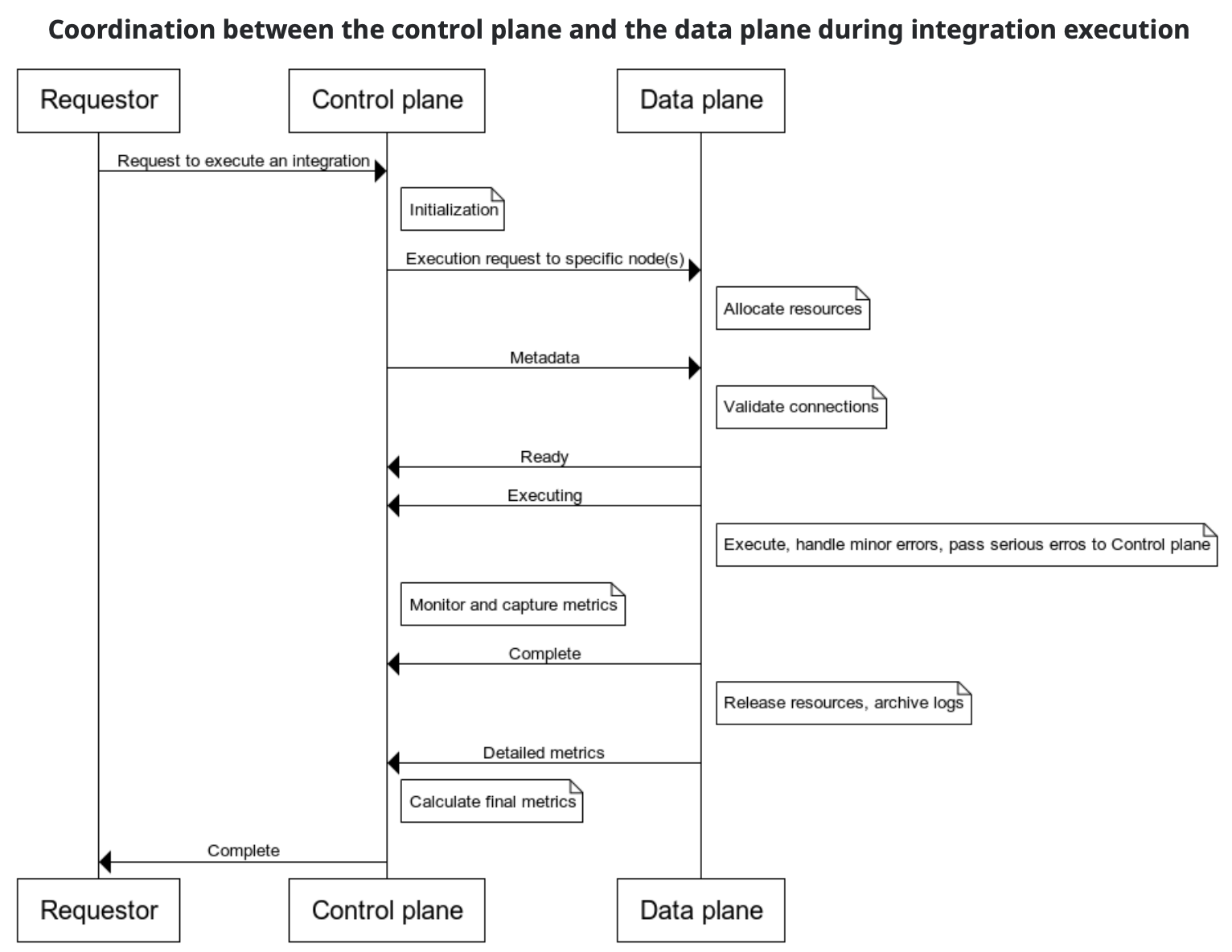Snaplex execution flow
The control plane and the data plane, introduced in the Platform overview, orchestrate the efficient processing of data across diverse business systems. The following diagram shows interactions between the control plane and the data plane during integration execution.

You can observe the information generated by the Snaplex nodes and the control plane in Monitor:
- In the Execution overview, click an execution to open the details. Learn more.
- The Snap Statistics tab shows a breakdown by Snap for the amount of documents processed. Hover over a Snap to see metrics such as the allocated memory and a breakdown of the amount of time each Snap took to complete its work. Learn more.
- The State Transition tab records timestamps at the start of each stage of execution, from preparation to completion. Learn more.
The following table correlates the initialization, preparation, execution, and completion stages of integration execution with the work performed by the control plane and Snaplex nodes.
| Stage | Control plane | Snaplex nodes |
|---|---|---|
| Initialization |
|
|
| Preparation |
|
|
| Execution |
|
|
| Completion |
|
|


